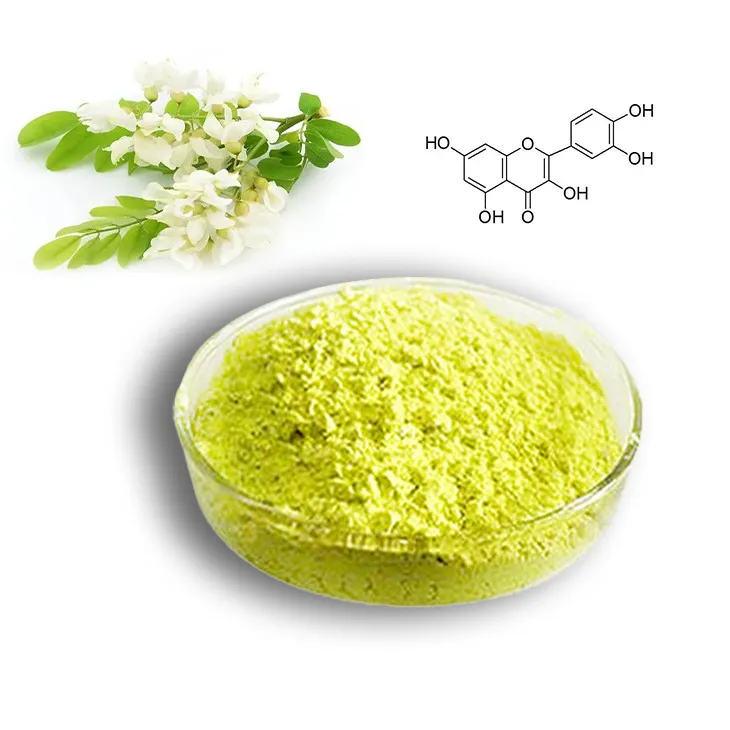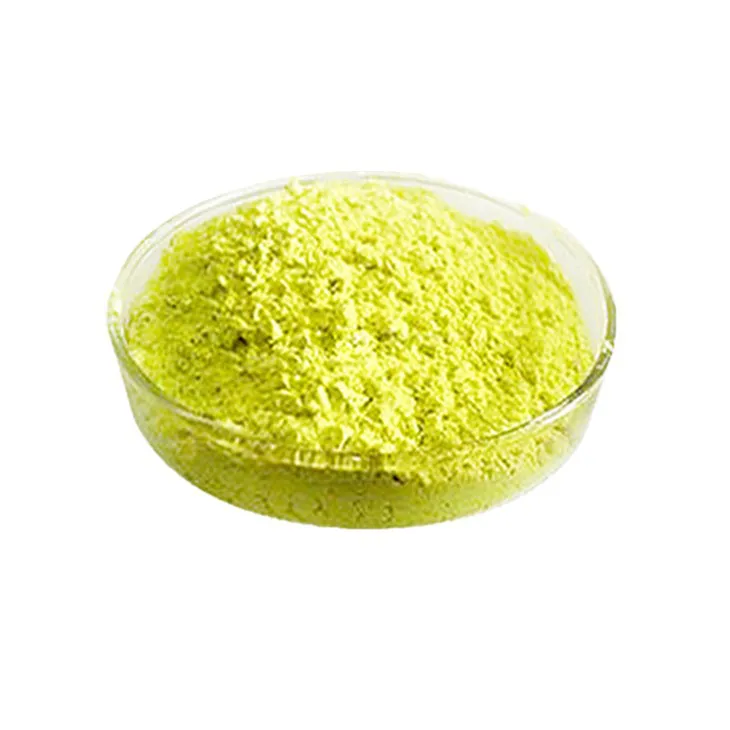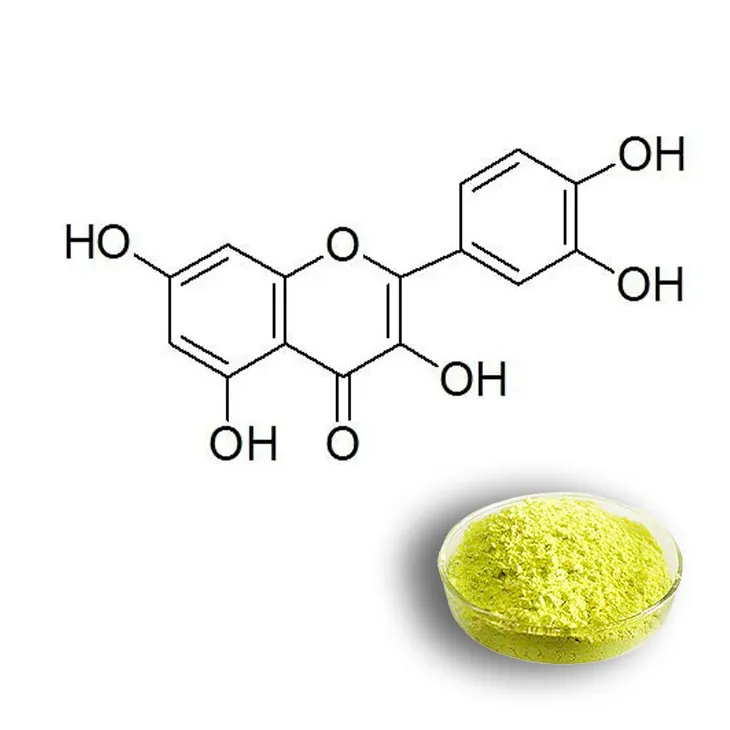- 0086-571-85302990
- sales@greenskybio.com
The Taste of Mature Quercetin and Natural Quercetin
2024-11-13

1. Introduction
Quercetin, a flavonoid compound, has been the focus of much research in recent years due to its numerous potential health benefits. Natural Quercetin, in particular, is of great interest as it is found in various natural sources and is considered a bioactive compound with wide - ranging implications. The taste of mature Quercetin is also an area worthy of exploration as it may provide insights into its chemical composition and efficacy. This article aims to comprehensively examine the taste of mature quercetin, compare it with other substances, and explore the role of natural quercetin in promoting health as well as its occurrence in different natural sources.

2. The Taste of Mature Quercetin
2.1 Sensory Characteristics
The taste of mature quercetin is a complex sensory experience. It often has a slightly bitter flavor, which is characteristic of many flavonoid compounds. This bitterness can be detected on the tongue, especially at the back where bitter receptors are more concentrated. However, it is not an overpowering bitterness like that of some extremely bitter substances. There may also be a faint astringency associated with it, which gives a drying sensation in the mouth. This astringency is thought to be related to the interaction of quercetin with proteins in the saliva.
2.2 Comparison with Other Substances
When compared to other flavonoids, mature quercetin's taste has both similarities and differences. For example, compared to catechins, which are also flavonoids, quercetin is generally more bitter. Catechins may have a milder, more tea - like flavor, while quercetin's bitterness is more pronounced. On the other hand, when compared to some other bitter plant compounds like alkaloids, quercetin's bitterness is relatively milder. Alkaloids can have a very sharp and intense bitter taste that can be quite unpleasant, whereas quercetin's bitterness is more tolerable and may even be described as having a certain complexity to it.

3. Chemical Composition and Taste Relationship
The taste of mature quercetin is closely related to its chemical composition. Quercetin has a specific molecular structure that contains phenolic hydroxyl groups. These groups are believed to contribute to its antioxidant properties as well as its taste. The presence of these hydroxyl groups can interact with taste receptors on the tongue, triggering the perception of bitterness. Additionally, the glycosylation status of quercetin can also affect its taste. Quercetin can exist in different glycosylated forms, and these forms may have slightly different taste profiles. For example, quercetin - 3 - O - glucoside may have a less bitter taste compared to the aglycone form of quercetin.

4. Natural Quercetin: A Bioactive Compound
4.1 Health - Promoting Properties
Natural quercetin is known for its various health - promoting properties. It is a powerful antioxidant, which means it can scavenge free radicals in the body. Free radicals are unstable molecules that can cause damage to cells, proteins, and DNA. By neutralizing these free radicals, quercetin helps protect the body against oxidative stress, which is associated with many chronic diseases such as cancer, heart disease, and neurodegenerative diseases. Quercetin also has anti - inflammatory properties. It can inhibit the production of inflammatory cytokines, which are signaling molecules involved in the inflammatory response. This anti - inflammatory effect can be beneficial for conditions such as arthritis, asthma, and inflammatory bowel disease.
4.2 Occurrence in Natural Sources
Natural quercetin is found in a wide variety of natural sources. One of the most well - known sources is fruits and vegetables. For example, apples contain a significant amount of quercetin, especially in the skin. Onions are also a rich source, with different varieties having different levels of quercetin content. Berries, such as blueberries and cranberries, also contain quercetin. In addition to fruits and vegetables, quercetin can be found in some herbs and spices. For example, capers are a good source of quercetin. The amount of quercetin in these natural sources can vary depending on factors such as the variety, growing conditions, and ripeness of the produce.

5. The Role of Taste in Quercetin Consumption
The taste of quercetin can play an important role in its consumption. The slightly bitter and astringent taste may limit its acceptance in some people. However, this taste can also be an indication of its potential health benefits. For those who are health - conscious and aware of the benefits of quercetin, the taste may be more tolerable. Additionally, efforts can be made to improve the palatability of quercetin - containing products. For example, in the food industry, quercetin can be combined with other flavors or ingredients to mask its bitterness. In the supplement industry, encapsulation or formulation techniques can be used to make quercetin supplements more palatable.
6. Research and Future Directions
There is still much research to be done on the taste of mature quercetin and natural quercetin. Future research could focus on further elucidating the relationship between the chemical composition and taste of quercetin. This could involve studying the effects of different structural modifications on taste. Additionally, more research could be done on the optimal ways to deliver quercetin in a palatable form. In terms of health benefits, further studies are needed to fully understand the mechanisms by which quercetin exerts its antioxidant and anti - inflammatory effects. There is also a need to explore the potential synergistic effects of quercetin with other bioactive compounds found in natural sources.
7. Conclusion
In conclusion, the taste of mature quercetin is a complex and interesting aspect that is related to its chemical composition. The slightly bitter and astringent taste has both implications for its consumption and potential as an indicator of its health - promoting properties. Natural quercetin, as a bioactive compound, has a wide range of health - promoting effects and is found in many natural sources. Understanding the taste of quercetin and its relationship to its chemical and biological properties can provide valuable information for researchers, food and supplement manufacturers, and consumers who are interested in natural health - promoting substances.
FAQ:
What are the main differences in taste between mature quercetin and natural quercetin?
The taste of mature quercetin might be different from natural quercetin due to possible changes during the maturation process. Mature quercetin could potentially have a more complex taste profile. However, specific taste differences would depend on various factors such as the source, extraction methods, and any chemical modifications that occur during maturation. Natural quercetin may have a more 'pure' or characteristic taste related to its natural state.
How does the taste of mature quercetin reflect its chemical composition?
The taste of mature quercetin can be an indicator of its chemical composition. For example, if it has a bitter taste, it could be due to the presence of certain phenolic groups in its chemical structure. These groups are often associated with antioxidant properties. A more astringent taste might suggest a higher concentration of tannins, which are also related to its potential health benefits such as anti - inflammatory effects.
What are the health benefits of natural quercetin?
Natural quercetin has numerous health benefits. It is known for its antioxidant properties, which can help protect cells from damage caused by free radicals. It also has anti - inflammatory effects, which may be beneficial for conditions such as arthritis. Additionally, it has been studied for its potential role in cardiovascular health, as it may help lower blood pressure and improve blood lipid profiles.
Where can natural quercetin be found?
Natural quercetin can be found in a variety of natural sources. Fruits such as apples, berries (especially cranberries and blueberries), and citrus fruits contain quercetin. Vegetables like onions, kale, and broccoli are also good sources. Additionally, some herbs and spices, like capers and dill, contain quercetin.
How can one determine the quality of mature quercetin or natural quercetin?
To determine the quality of mature quercetin or natural quercetin, several factors need to be considered. For natural quercetin, the source is important. High - quality sources should be fresh and free from contaminants. Analyzing the purity of the compound through laboratory techniques such as chromatography can also provide information about its quality. For mature quercetin, in addition to purity, the stability of its chemical composition during the maturation process needs to be evaluated.
Related literature
- Quercetin: A Promising Natural Compound for Health Promotion"
- "The Chemistry and Biological Activity of Quercetin in Maturation"
- "Taste Profiles and Chemical Compositions of Natural Bioactive Compounds: A Focus on Quercetin"
- ▶ Hesperidin
- ▶ Citrus Bioflavonoids
- ▶ Plant Extract
- ▶ lycopene
- ▶ Diosmin
- ▶ Grape seed extract
- ▶ Sea buckthorn Juice Powder
- ▶ Fruit Juice Powder
- ▶ Hops Extract
- ▶ Artichoke Extract
- ▶ Mushroom extract
- ▶ Astaxanthin
- ▶ Green Tea Extract
- ▶ Curcumin
- ▶ Horse Chestnut Extract
- ▶ Other Product
- ▶ Boswellia Serrata Extract
- ▶ Resveratrol
- ▶ Marigold Extract
- ▶ Grape Leaf Extract
- ▶ New Product
- ▶ Aminolevulinic acid
- ▶ Cranberry Extract
- ▶ Red Yeast Rice
- ▶ Red Wine Extract
-
Phyllanthus Emblica Extract
2024-11-13
-
Maitake Mushroom Extract
2024-11-13
-
Saw Palmetto Extract
2024-11-13
-
Kidney Bean Extract
2024-11-13
-
Scutellaria Extract
2024-11-13
-
Grapefruit Seed Extract Powder
2024-11-13
-
Black Rice Extract
2024-11-13
-
Calendula Extract
2024-11-13
-
Mulberry leaf Extract
2024-11-13
-
Eucommia Ulmoides Extract
2024-11-13





















